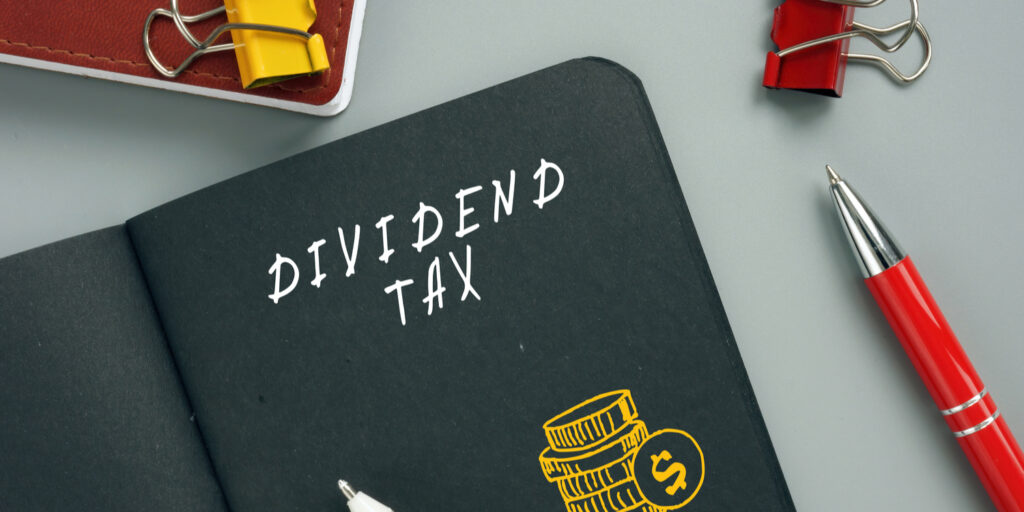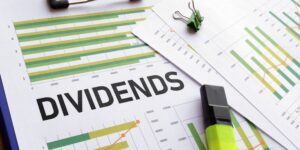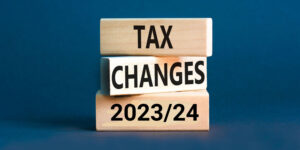Issuing dividends is a tax-efficient way to extract money from a limited company. If you’re a company owner, you can pay yourself dividends at any time, as long as the business has distributable profits available for such purposes. However, before doing so, it’s important to understand how much dividend tax you will pay on this income.
How much dividend tax do I have to pay?
In the UK, there are currently three rates of dividend tax, each of which ties in with current Income Tax bands and annual taxable earnings thresholds. Any dividend income you receive in the 2025/26 tax year will be subject to the following rates:
- 8.75% – the basic rate – earnings up to £50,270
- 33.75% – the higher rate – earnings from £50,271 to £125,140
- 39.35% – the additional rate – earnings above £125,140
You won’t pay any tax on dividend income within your Personal Allowance. The standard Personal Allowance (PA) is £12,570 per year, which is the amount of income you can earn in a year without paying tax. However, the PA reduces by £1 for every £2 of adjusted net income above £100,000, meaning your allowance will be zero if your income is £125,140 or more.
There is also a dividend allowance of £500, so you won’t pay tax on the first £500 of dividend income you receive in 2025/26.
Thereafter, you will pay dividend tax based on your total taxable earnings for the year. To work out which rates apply, you need to add all of your taxable income together (e.g. dividends, salary, benefits in kind, rent from property, etc) to determine your tax band.
Let’s take a look at some examples to see how dividend tax works.
Example 1: Based on a £20,000 salary and dividends of £60,000
Simon has a total taxable income of £80,000 (£20,000 salary + £60,000 dividends). As his total taxable earnings are over £50,270, some of his dividends will be taxed at the higher rate. But, what proportion, and how much dividend tax will Simon pay?
First, Simon’s £20,000 salary will be taxed at the applicable rates of Income Tax and National Insurance contributions (NIC). With the Personal Allowance and NIC Primary Threshold both set at £12,570 for 2025/26, most of this will be tax-free. The rest will be liable to 20% Income Tax (different rates in Scotland) and 8% Class 1 NIC.
Simon will pay £1,486 Income Tax and £594 NIC on his salary. He will get the first £500 of dividends tax-free and will pay dividend tax on the remaining £59,500. Of this, £29,770 will be taxed at the rate of 8.75% (= £2,605), and the remaining £29,730 taxed at 33.75% (= £10,034).
Total personal tax and National Insurance payable is £14,719
Example 2: Based on a £60,000 salary and dividends of £20,000
Lesley’s total taxable income is £80,000 (£60,000 salary + £20,000 dividends). Her total income is the same as Simon’s but all of Lesley’s dividends will be taxed at the higher rate.
Lesley’s £60,000 salary will be taxed at the relevant Income Tax and NIC rates. The first £12,570 is tax-free. The portion between £12,571 and £50,270 attracts the basic Income Tax rate of 20%, and the remaining £9,730 at the higher rate of 40%.
She will get the first £500 of dividends tax-free, as did Simon, and pay dividend tax on the remaining £19,500. However, as tax on salaries is calculated before dividends, all of Lesley’s dividends will be charged at the higher tax rate of 33.75%.
Total personal tax and National Insurance payable is £21,807
Therefore, whilst Lesley’s total taxable earnings are the same as Simon’s, and she receives fewer dividends than him, her dividends are taxed at a higher rate than Simon’s. Furthermore, Lesley’s personal tax and National Insurance bill is £7,088 more than Simon’s.
Ultimately your total taxable income determines the dividend tax rate. Have a look at the GOV.UK website for more information on tax on dividends and Income Tax rates. If you live in Scotland, your salary income will be subject to Scottish Income Tax. However, you will pay the same rates of National Insurance and dividend tax as taxpayers residing in other UK nations.
How beneficial is it for me to receive dividends?
Receiving dividends can be very beneficial, given that the dividend tax rate is 8.75% on earnings up to £50,270. And, for most UK residents, a salary attracts 20% Income Tax and an 8% National Insurance contribution. This is effectively 28% on all earnings above the annual tax and NI thresholds.
That being said, dividends are not always advised or allowed. Therefore, we recommend speaking to your accountant to discuss the most cost-effective and tax-efficient way of paying yourself through your company. The most beneficial option can differ depending on your company’s financial position and your own financial circumstances.
I am a sole trader – is it more tax-efficient to be a limited company?
It can be more tax-efficient to trade as a limited company as opposed to a sole trader – especially in relation to dividend tax versus Income Tax.
However, the decision to convert from sole trader to limited company should not be made solely on the grounds of paying less tax. There are many other factors to consider.
Furthermore, depending on the type of business you have and the level of profit it generates, you may not save any tax on your earnings.
Does a company pay any dividend tax?
Companies do not pay any dividend tax, but they only distribute dividends from profits after deducting Corporation Tax. Whatever is left after accounting for this tax is available to pay as dividends.
By comparison, salary payments and pension contributions are both tax-deductible expenses BEFORE Corporation Tax. These types of payments reduce a company’s taxable profits, thereby reducing its Corporation Tax bill.
Dividends are not tax-deductible business expenses. Generally, however, you will still pay less tax overall by taking higher dividends and a lower salary.
When can I take dividends out of my limited company?
You can take dividends if your company has made a profit after tax, and/or has carried forward reserves (i.e. profits) from previous years. However, deciding on awarding dividends is not simply a case of looking at the bank balance. There are other factors to consider.
Before paying a dividend, you must assess:
- any income paid in advance (known as deferred income)
- your tax obligations (such as Corporation Tax, VAT, and PAYE)
- any supplier or other bills still to pay
- terms and conditions of loans and investments received
- restrictions around grants received
- and future trading expectations.
Moreover, the company’s constitution may include restrictions on awarding dividends, so it is worth checking the articles of association.
As you can see, there is more to paying dividends than simply working out the dividend tax liability.
When should I not take dividends out of my company?
Dividends must come out of operational profit or reserves. You cannot pay dividends if the company has:
- not made a profit and has no reserves carried forward from previous years
- not fulfilled its tax or other financial obligations
Current and future trading expectations should also be considered. Whilst we are unable to predict the future, it is advisable to maintain a cash buffer to accommodate any fixed costs arising in the next 3 to 12 months before paying out dividends. The size of the cash buffer will vary depending on your particular business.
Do I need to fill in a tax return if I get dividends?
Currently, if you receive dividends of under £10,000, you don’t need to complete a Self Assessment tax return. However, if you receive dividends of over £10,000, you must complete a tax return for HMRC. You can use HMRC’s online tool to check if you need to send a Self Assessment tax return.
Please note that the information provided in this article is for general informational purposes only and does not constitute legal, tax, or professional advice. While our aim is that the content is accurate and up to date, it should not be relied upon as a substitute for tailored advice from qualified professionals. We strongly recommend that you seek independent legal and tax advice specific to your circumstances before acting on any information contained in this article. We accept no responsibility or liability for any loss or damage that may result from your reliance on the information provided in this article. Use of the information contained in this article is entirely at your own risk.






Join The Discussion